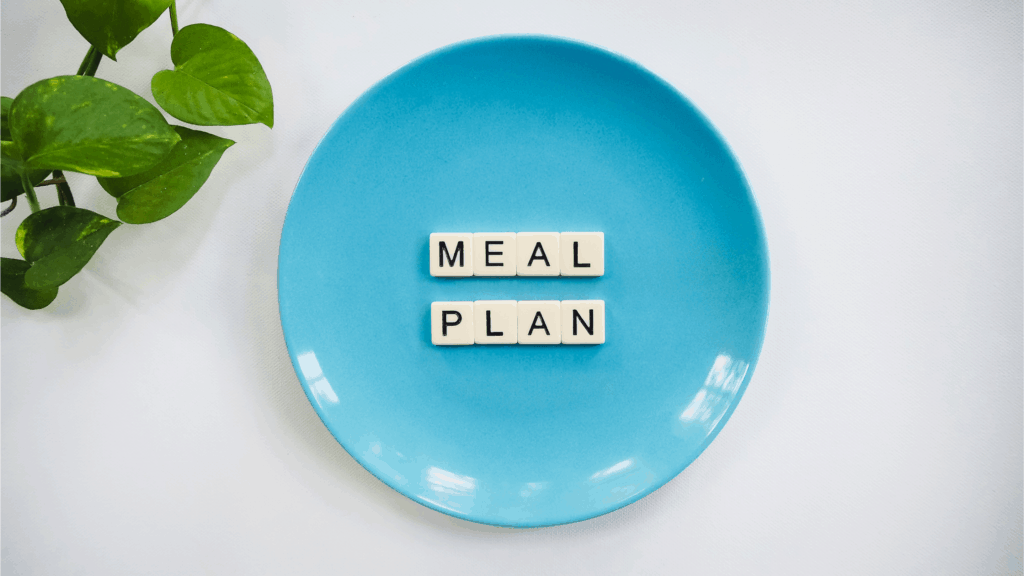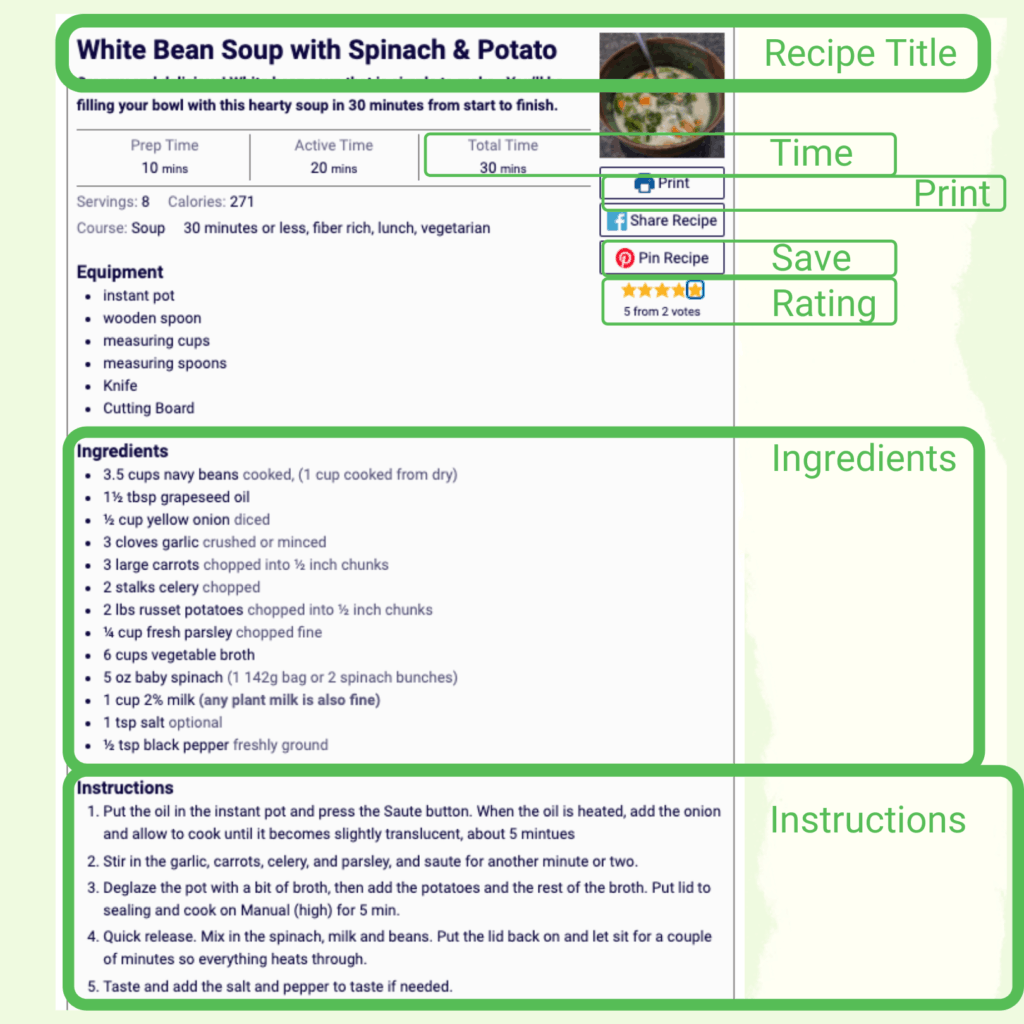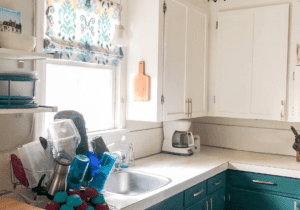Meal Planning: One Small Step for Dinner, One Giant Leap for Healthier Eating
Relaxed home cooks have a plan
If done with an emphasis on using more whole and minimally processed foods and cutting back on ultra-processed items, meal planning can be beneficial to your long-term health goals.
But how do you make it simple enough that you’ll show up to do it every week? Start by planning dinner menus.

Benefits of Dinner Meal Planning
Planning your dinner menus gives you a better chance at putting more nutritious meals on your table and in your stomach. Without a plan, it’s far too easy to reach for faster, less nutritious meals because you’ll probably just want to get anything on the table as quickly as possible. And the truth is, quick very often means meals made up of mostly processed carbs or fatty proteins with little nutritional value.
By cooking with mostly whole foods and cutting way back on ultra-processed items, you could automatically be setting yourself up for better health because these types of foods have been known to help:
- lower blood pressure
- prevent cardiovascular disease (CVD)
- possibly reduce the risk of chronic diseases like Type 2 diabetes and cancer
- plus, eating fewer ultra-processed foods (which have been known to cause inflammation in the body) could reduce the risk of obesity, which is linked to a slew of health conditions.
Meal planning could be the cure.
More Benefits of Meal Planning
Along with using more whole foods to nourish your body, planning can make sure you’re eating a variety of foods with various nutrients, allowing your body to function properly and probably giving you more consistent energy levels throughout the day.
Planning dinner menus can also prevent the 6 p.m. dread of figuring out what’s for dinner. And having a fun meal plan with your tested recipes can even get you excited about what’s for dinner. Imagine looking at your dry erase or chalkboard with 4 – 6 meals you look forward to cooking and eating healthy.
A 5 part process to make meal planning easy
The task of meal planning can seem daunting, but here are five steps to make it easier. You’ll soon be on your way to having nutritious, balanced, and delicious meals grace your table more often.
1. Start with Better Recipes
Following a recipe is a fantastic way to get started because you don’t have to reinvent the wheel. Choosing better recipes is paramount to healthier eating.
Three of my favorite websites to search for recipes:
And of course the recipes here on balancedhealthstyles.com/healthier-recipes, created by well-loved nutrition and fitness recipes coaches.
Start by typing “chicken,” “pork,” “beef,” “vegetarian” or any other number of keywords based on what you might be craving into one of the websites listed above, one of your favorite recipe websites, or in Google.
You’ll get a better idea of what you’re looking for once you start scrolling through the recipes. You can begin to narrow down your search at that point.
What to look for when choosing a recipe:
- Look at the recipe title to see if it appeals to you.
- Quickly read through the ingredient list. Make sure the majority, if not all of the ingredients are whole or minimally processed foods.
- See if there’s a difficulty level and decide if you’re in the mood to take on that requirement. If you want to get meals on the table quicker, opt for recipes with lower difficulty levels.
- Also, check out the time requirement and make sure you’re willing to spend that amount of time on the dish. Keep in mind, it usually takes a little longer than the recipe states.
- Check out the ratings. You don’t have to read them all, or any of them really, but they’ll give you a good idea of whether the recipe is worth making. Everyday home cooks are more than happy to share their experiences with the recipe.
- Scan the directions to make sure it’s a recipe you feel comfortable making.
- Print the recipe or pin it online on a website like Pinterest.
2. Create a “Cookbook”
If you don’t save your recipes in some kind of organized way, you’ll likely forget where you stored the ones you liked and want to eat again.

Buy binders, tabs, and sheet protectors and create your own “cookbook.” When you try a recipe and decide it’s a keeper, place it in a sheet protector and into its proper place in your new cookbook. This should be your first source for finding recipes to add to your weekly menus.
3. Take Stock
Go through your pantry and fridge before you pull your plan together and see what items you could use in the next week’s menu. If you don’t already have a recipe for those ingredients, try searching websites like:
4. Consider Your Plans for the Week
How many nights are you planning to eat at home this week? How many people are you feeding at each meal? Do you want leftovers (if so, consider doubling the recipe)?

5. Write the Balanced Meal Plan
This part of the process has 6 action steps to bring it all together.
Step 1: Think about how many nights during the week you might want to eat chicken, beef, vegetarian, fish, etc.
Step 2: Start with the recipes in your “cookbook,” then begin searching online if you need new recipes.
Don’t overthink things.
Step 3: To balance your plate, at a minimum think lean protein, a vegetable (or two or three), and healthy fat (besides olive oil or another healthier oil consider things like salmon, avocados, and nuts). Then decide if you want a (preferably whole grain) carb and/or maybe some fruit.
Step 4: Begin writing out your plan on a sheet of paper.
- Start with the protein, then next to that add a vegetable or two.
- You don’t need to worry about adding a fat because you’re probably going to be cooking with some kind of oil, and there will most likely be fat in some of the items you’re using.
- If you’re including a carb, add it after the vegetable.
Your plan is coming together. It may take a few scratched-out lines, but keep at it.
Allow for flexibility during the week. If you decide you want a different vegetable with one of your proteins, no sweat. Because of your planning efforts, you’ll have all the ingredients you need to switch things up.
Step 5: Add all the ingredients you’ll need from your recipes to your grocery list.
Step 6: Transfer your menu plan to a new sheet of paper, a dry erase board, or chalkboard, and give yourself a big pat on the back!
Start small! If you’re new to meal planning, even one day a week is a great beginning.
Best (Free) Meal Planning Apps for When You Just Don’t Want to Do it Yourself
Sometimes it’s all we can do to get through the day, and we just don’t have the stamina to put together a plan for the week. Using an app for meal planning to help pull together a quick menu can be super useful because you’re still focusing on using quality ingredients, which is key to this whole endeavor.
Here are three free meal planning apps I find helpful:
Spending a little time and effort to make meal planning your “new normal,” the thing you consistently fall back on, could have a tremendous impact on your long-term health (and, possibly, your sanity). There’s no harm in giving it a go.
What will your menu board look like this week?
Perfection rejectionist Lisa Kiersky Schreiber is a nutrition and lifestyle coach who helps clients take a holistic and realistic approach to wellness. Lisa got off the diet carousel and can help you do the same.
Find other articles written by Lisa on her coach profile. Her philosophy will help you simplify your nutrition lifestyle so you can learn to trust yourself implicitly around food.








